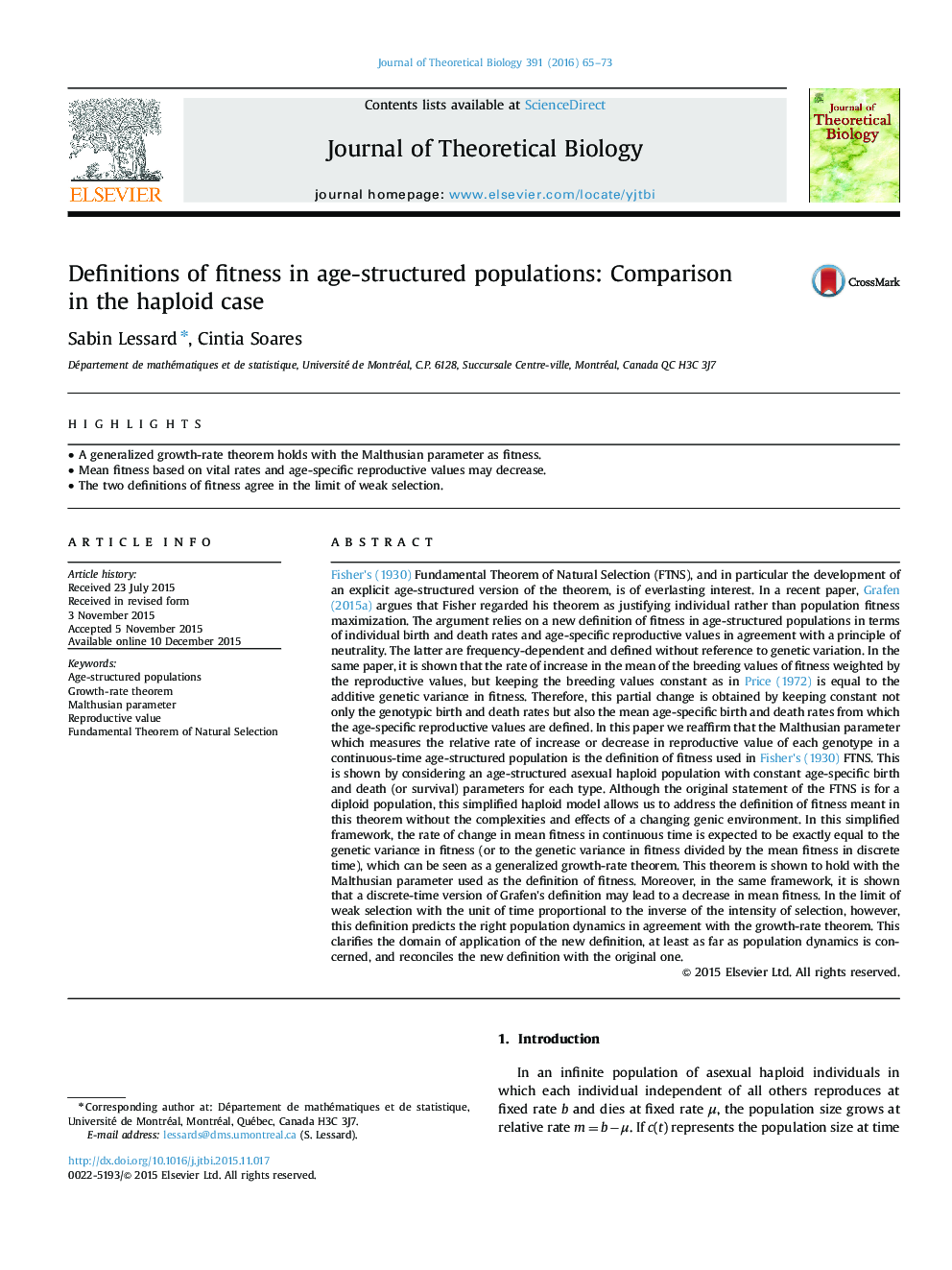| کد مقاله | کد نشریه | سال انتشار | مقاله انگلیسی | نسخه تمام متن |
|---|---|---|---|---|
| 4495931 | 1623819 | 2016 | 9 صفحه PDF | دانلود رایگان |
• A generalized growth-rate theorem holds with the Malthusian parameter as fitness.
• Mean fitness based on vital rates and age-specific reproductive values may decrease.
• The two definitions of fitness agree in the limit of weak selection.
Fisher׳s (1930) Fundamental Theorem of Natural Selection (FTNS), and in particular the development of an explicit age-structured version of the theorem, is of everlasting interest. In a recent paper, Grafen (2015a) argues that Fisher regarded his theorem as justifying individual rather than population fitness maximization. The argument relies on a new definition of fitness in age-structured populations in terms of individual birth and death rates and age-specific reproductive values in agreement with a principle of neutrality. The latter are frequency-dependent and defined without reference to genetic variation. In the same paper, it is shown that the rate of increase in the mean of the breeding values of fitness weighted by the reproductive values, but keeping the breeding values constant as in Price (1972) is equal to the additive genetic variance in fitness. Therefore, this partial change is obtained by keeping constant not only the genotypic birth and death rates but also the mean age-specific birth and death rates from which the age-specific reproductive values are defined. In this paper we reaffirm that the Malthusian parameter which measures the relative rate of increase or decrease in reproductive value of each genotype in a continuous-time age-structured population is the definition of fitness used in Fisher׳s (1930) FTNS. This is shown by considering an age-structured asexual haploid population with constant age-specific birth and death (or survival) parameters for each type. Although the original statement of the FTNS is for a diploid population, this simplified haploid model allows us to address the definition of fitness meant in this theorem without the complexities and effects of a changing genic environment. In this simplified framework, the rate of change in mean fitness in continuous time is expected to be exactly equal to the genetic variance in fitness (or to the genetic variance in fitness divided by the mean fitness in discrete time), which can be seen as a generalized growth-rate theorem. This theorem is shown to hold with the Malthusian parameter used as the definition of fitness. Moreover, in the same framework, it is shown that a discrete-time version of Grafen׳s definition may lead to a decrease in mean fitness. In the limit of weak selection with the unit of time proportional to the inverse of the intensity of selection, however, this definition predicts the right population dynamics in agreement with the growth-rate theorem. This clarifies the domain of application of the new definition, at least as far as population dynamics is concerned, and reconciles the new definition with the original one.
Journal: Journal of Theoretical Biology - Volume 391, 21 February 2016, Pages 65–73
